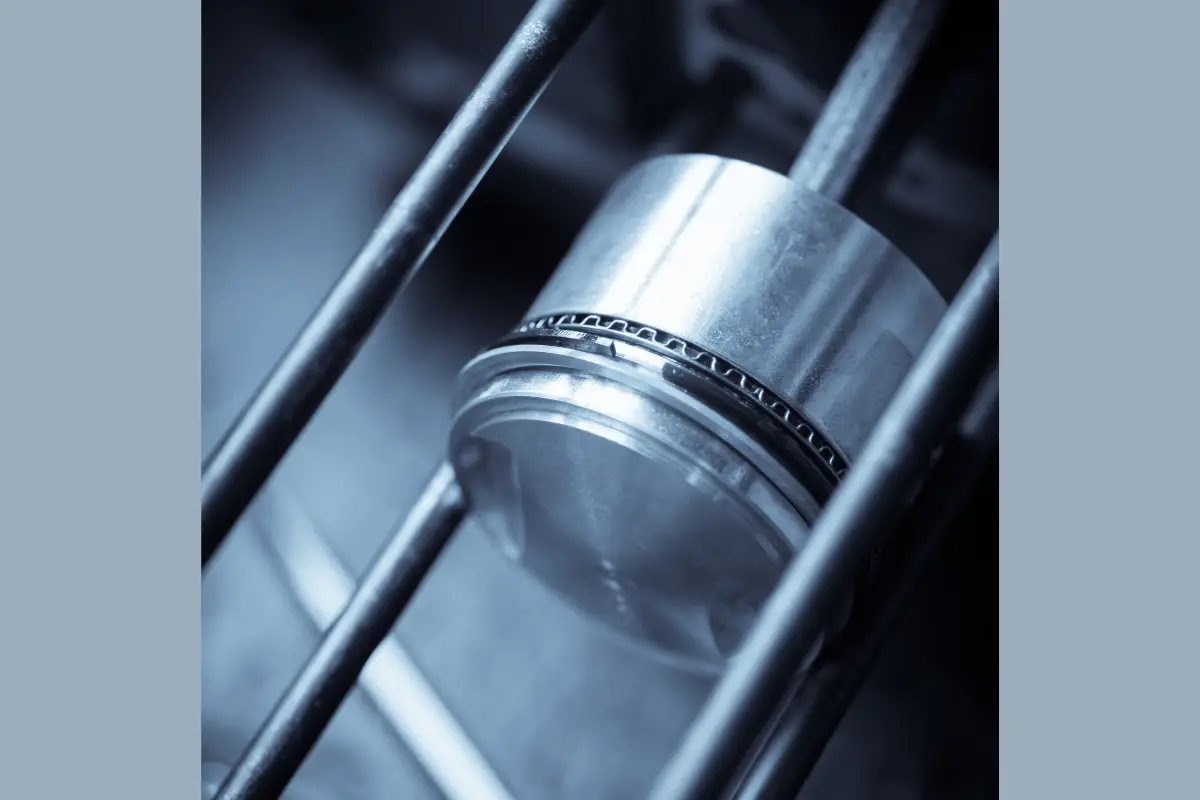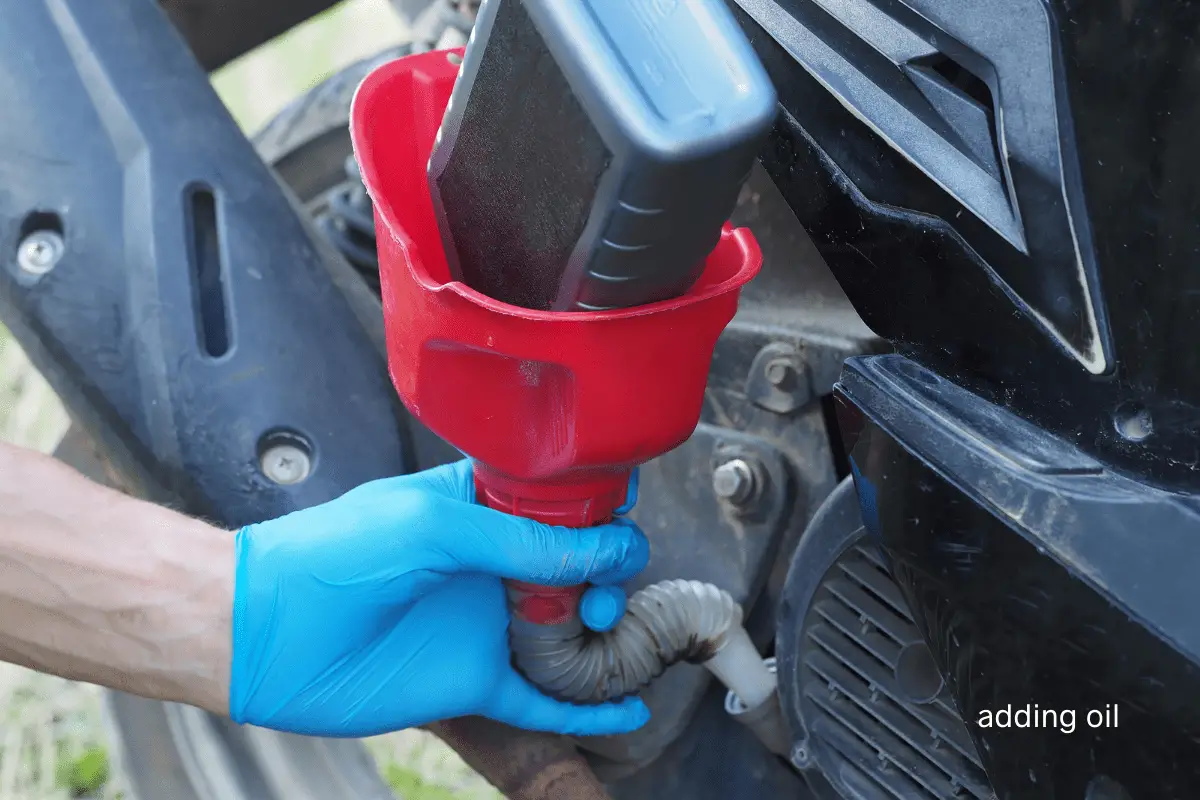You’re likely to run across a few folks that are super passionate about their 2 stroke scooter. Then there are folks that simply prefer a 4 stroke motor scooter. Oh, the passionate arguments that can be had here….!
Who’s right? Which is better? What does the stroke matter? I know what it’s like as a newbie when you’re not quite sure!
Let’s start by defining what a stroke is exactly much less 2 or 4 of them! Then, I won’t add to the arguments necessarily about which is better but walk through some pros and cons to help you decide what your favorite is.
What Does a 2-Stroke or 4-Stroke Mean?
If you’re talking any stroke, you’re talking about how power happens within what is called an internal combustion process. This process takes an air & fuel mixture for a spark which is then converted to the power that literally scoots your scoot.
A stroke describes the movement that occurs as part of the internal combustion process of providing power.
If you like more detail, power is created by the up-and-down movement of the pistons which in turn rotates the crankshaft. The piston is moved through a combustion process, where air and fuel enter the combustion chamber, get compressed, and then ignited. The force of the ignition is what actually moves the piston.
The whole process involves an intake (air & fuel enters), it gets compressed, it gets ignited, & then exhaust gases are exhausted (lol). How this happens for a 2 & 4-stroke is a bit different, but the overall elements are the same.
What is a 2-Stroke Scooter?
So a stroke is that crankshaft rotation moving a piston. The whole process for a 2-stroke is done in literally 2 strokes. If that is fuzzy, let’s dive in a bit more.
A 2-stroke engine needs two strokes to complete the ENTIRE combustion cycle because multiple steps of the combustion process happen within the same stroke.
For a 2-stroke engine, the first stroke is both the compression stroke and the ignition stroke, while the second stroke is both the exhaust stroke and the intake stroke.
One up movement takes care of 2 parts of the process, and the single down movement takes care of the other 2 parts to that process.
2-stroke engines have a few unique maintenance requirements compared to 4-strokes. The biggest one is that 2-stroke engines don’t have a separate reservoir for oil; instead, oil is pre-mixed with fuel and added into the fuel tank.
What is a 4-Stroke Scooter?
Since 2-strokes have a single up & down movement of the piston, 4-strokes have 4 of those, right?
Kinda.
4-stroke engines, as the name implies, have their combustion cycle divided up into four steps instead of two. A 4-stroke engine works as follows:
- The piston goes down in the combustion chamber, the intake valve opens, and the air/fuel mixture enters. This is the intake stroke.
- The piston goes up, compressing the air/fuel mixture. This is the compression stroke.
- The spark plug ignites the air/fuel mixture, the force of which pushes the piston down and generates power. This is the combustion stroke.
- Finally, the piston goes up once more, which forces the exhaust gases out of the combustion chamber through the exhaust valves. This is the exhaust stroke.
The up & down movement does happen 4 times, but the first movements are the intake and compression. The 2nd rotation handles the combustion and exhaust. This means that the ignition part happens every OTHER rotation.
Another thing to note is that the 4 stroke engine requires oil in a completely separate reservoir.
Pros and Cons — 2-Stroke vs 4-Stroke
So, if you’re trying to pick between a 2-stroke or a 4-stroke scooter, which one is going to be better? I told you! I can’t tell you which is better for you. I can lay out some advantages and disadvantages to help you decide which is best for you!
We are going to start with the pros and cons of 2-strokes, but know that the number of 2-stroke options is decreasing. That does NOT mean you can’t get a 2-stroke. It’s just not common for new scooters anymore.

2-Stroke Scooter Pros and Cons
The context of this conversation is scooters, but you’ll find that 2-strokes are similar across motors. Let’s start with what makes a 2-stroke awesome til we talk about some less than awesome cons to this 2 step ‘magic’.
2-Stroke Pros
2-stroke engines are sometimes described as more primitive than 4-strokes, but they can still be advantageous to have in a few ways.
For one, they contain fewer moving parts and operate in such a simple manner which makes them easier to maintain compared to 4-stroke engines.
In addition, 2-stroke engines make more power than 4-strokes, because in a 2-stroke engine every other stroke is a power stroke. A 2-stroke engine will almost always produce more power than a 4-stroke engine of the same size.
You can DEFINITELY feel the extra power from a 2-stroke on the lower end of the speed range in particular!
2-strokes are also lighter than 4-strokes. Since they can make more power despite being smaller, you’re more likely to see a 2-stroke in lighter applications – like scooters.
2-Stroke Cons
However, there are also several downsides to using a 2-stroke engine to understand.
While it may be easier to maintain a 2-stroke engine overall, this doesn’t mean that 2-strokes require less maintenance than 4-strokes.
Quite the opposite, in fact. 2-stroke engines require much more frequent maintenance than 4-strokes because the way they’re lubricated means their internal components wear out a lot faster.
2-stroke engines also need to run on a mixture of fuel mixed with oil, but you can’t just dump a bunch of oil in your fuel tank and call it a day. Every time your scooter needs more oil or gas, you need to add the correct amount of both into your gas tank.
You can either pre-mix your oil and fuel yourself, or chances are you can also buy pre-mixed fuel for 2-strokes from your local hardware or automotive store.
Of course, doing either of these things is going to be less convenient than just going to a gas station and filling up there.
Last but not least, 2-stroke engines are both far less fuel-efficient and produce way more harmful emissions than 4-stroke engines since they basically work twice as hard in their 1 rotation than their 4-stroke cousin.

4-Stroke Scooter Pros and Cons
Most scooters available on the market are 4-stroke, but it’s important to know the pros and cons still. This is especially true when we start thinking about maintenance!
4-Stroke Pros
While that torquey feel of a 2-stroke isn’t had on a 4-stroke, 4-strokes are definitely better at power delivery with lower RPMs.
4-stroke engines are also far more efficient than 2-strokes, because the way they work results in less unburnt fuel leaving through the exhaust. As such, 4-strokes also produce far fewer emissions than 2-strokes.
4-strokes have a heavier flywheel than 2-strokes because since the power stroke doesn’t happen as often in a 4-stroke engine, it needs more inertia to maintain the engine speed when the power stroke isn’t happening. A heavier flywheel and less frequent power strokes can actually give you a little more traction in some off-road situations – even if subtle.
4-strokes also have a separate tank for their oil, so there’s never any need for remixing.
Just pump your fuel in your fuel tank and your oil in your oil tank, and you should be good to go.
4-strokes are also generally more reliable than 2-strokes and don’t require as much frequent maintenance.
4-stroke engines are more complicated than 2-strokes and don’t produce as much power, but they’re a more sensible engine to have in most cases. While 4-strokes don’t produce as much power overall as 2-stroke engines, they are a bit better at power delivery during low RPM than 2-strokes are.
Because each step of the combustion process is done with every other rotation instead of every rotation, you’re likely to need to do less to that motor than a 2-stroke with longer intervals in between! It will wear out much slower than it’s 2-stroke counterpart.
4-Stroke Cons
While 4-strokes are better than 2-strokes in a lot of ways, there are a few reasons why 2-strokes are sometimes the better option for vehicles like scooters.
The main one is that 4-stroke engines are heavier than 2-strokes, and for something small like a scooter, you don’t really want to be hauling a lot of extra weight around.
Not only would this make you slower, but a heavier scooter wouldn’t handle as well.
In addition, maintaining a 4-stroke engine is more difficult than a 2-stroke because 4-strokes contain more moving parts.
Which One Is Better – 2-stroke of 4-stroke scooters?
Ultimately, this depends on what you’re looking to get from a scooter. If you’re looking for a scooter simply as a means of transportation, a 4-stroke scooter is probably your best bet; they’re more fuel-efficient, more reliable, don’t require as much maintenance, and don’t pollute as much.
On the other hand, if you’re looking for a scooter to ride around for fun, a 2-stroke might be closer to your preference. You’ll have to put up with pre-mixing your fuel and much more frequent maintenance, but if all you care about is going fast, a 2-stroke scooter might be the better choice for you.





